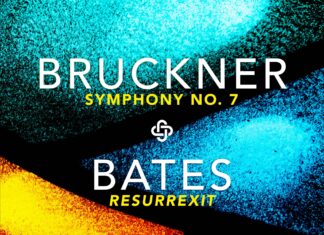Music Reviews:
Philip Glass, Piano Works (selection)
Víkingur Ólafsson (pianist)
Deutsche Grammophon
Bach, Solo Piano Works (selection)
Víkingur Ólafsson (pianist)
Deutsche Grammophon
Philip Glass
I have listened to a lot of different recordings of the Glass Etudes. These are among my favourite contemporary minimalist piano pieces. I stress the word minimalist because these can in no way be compared to other contemporary Etudes (such as Ligeti’s, Dusapin’s or Rorem’s even). I have also heard people claim that a lot of minimalist music leaves little room for performance. But the barrage of different recordings of the Glass Etudes proves otherwise: composition began in 1994 and the complete set was published in 2014. Since 2004 there have been 13 different recordings by 13 different pianists each one of them sounding very distinct. Just looking at the timings on the individual sets proves this.
Now as far as Ólafsson’s recording is concerned, the timings alone show an overall swifter approach compared to the composer’s. In fact, according to a New York Times article, upon hearing Ólafsson performing the 6th Etude, Philip Glass himself claimed, “It sounds wonderful. Someone should really give you a speeding ticket. But that’s not going to be me.” And, from the same source, Ólafsson adds that the composer stated something along the lines, “I might choose something else, but if it’s convincing, keep it because it’s yours.”
One could say that the very fact that Philip Glass approves of Ólafsson’s individuality is sufficient. And of course, it is. But listen for yourselves and you will discover an entirely different “Glassian” world, not just different from the composer’s own recordings but from most performances. Also, don’t let yourselves take the composer’s comment about Ólafsson’s tempo literally: yes, the playing is fast but not everywhere. A case in point is the Opening from Glassworks: not only is it taken more slowly compared to other performances, but for me, this is the most thoughtful, atmospheric interpretation of the score. Under Ólafsson, even the continuous repetitions sound fresh every time they appear with subtle nuances, pedalling and colouring employed precisely when needed. Especially the understated, delicate left-hand fingerwork somehow makes one focus more on the details of this magnificent work. But the most astonishing thing about Ólafsson’s Glass are his transitions between the themes. They are perfectly executed, perhaps better than any recording of these works so far. In short, the Philip Glass selection is essential listening and not just for the composer’s aficionados.
Bach
The same level of commitment is present in Ólafsson’s latest instalment for Deutsche Grammophon which consists of a selection of Bach pieces. A different world entirely from that of Philip Glass but still his playing can be described as precise, introspective and contemplative (I would add with echoes of minimalism but I don’t want to scare you away! After all, you’ll be really missing out on something great if you don’t sample Ólafsson’s Bach). Nevertheless, one can trace glimpses from the old masters in Ólafsson’s style and technique and it’s no surprise that the pianist grew up listening to the recordings of Tureck, Fischer, Lipatti, Gould and Argerich (according to the booklet notes) or the fact that Gilels has been one of his favourite pianists (according to his blog). And speaking of the booklet notes, if one has doubts about Bach being performed on a modern piano, one should really read Ólafsson’s absolutely fascinating notes, where he talks about the timeless and contemporary qualities of Bach’s music, as well as the fact that each new performer listed above further illuminated his views on how Bach could be performed.
So how is Ólafsson’s Bach then? This is Bach distilled. Not romantic but not sterile either. On the contrary, there’s plenty of emotion. The difference here is that while many pianists’ emotional interpretation stems mainly from a lyrical approach, careful pedalling or plenty of rubato, Ólafsson’s emotional gravitas is a result of his refined rhythmic precision. This precision could have resulted in a mechanical effect under a different pianist but Ólafsson knows how to adjust the tempo according to the thematic relations and the crystalline-quality of his playing is far from calculated. Indeed, listen to the slow movements or the quieter pieces in this album and you will witness an almost spiritual approach to Bach with no trace of sentimentality. In a way, his playing reminds me of the great director Robert Bresson who, by using an ascetic method of direction and staying detached from his characters, managed to deliver a purer sort of emotional punch, devoid of affectations.
But it’s not all about Bach with feeling. Ólafsson can show off his virtuosity when the piece demands it such as the Bach Nun freut euch, lieben Christen g’mein transcription by Kempff. Compared to Kempff’s own performance, Ólafsson’s version sounds quicker and livelier. This is Bach re-imagined then, not just for the sake of something new, but by taking into account, filtering and re-filtering and carefully applying different schools of Bach interpretation.
The pre-DG recordings
So, judging from his two DG releases, Ólafsson’s pianism left me very impressed. For me, the final test was to listen to the pianist’s pre-DG recordings. From his interviews, I knew that he used to have his own label under which he recorded a couple of albums (plus an album of the Winterreise). Luckily, I was able to spot these on the streaming services. I listened to the CD with the Bach 2nd and 5th Partitas first; the Partitas being among my favourite works for the piano (well… keyboard) repertoire. Once more, I was struck by the clarity and rhythmic dexterity. What I noticed this time was how the pianist employs short and long pauses with fluctuating tempi between different sections of these works. And while in some movements his tempo amazes with the springing rhythm, in the Sarabandes his introspection has a humane simplicity.
The same sprung rhythms, combined with some thought-provoking insights in the slowest parts, are also to be found in his Chopin Preludes recording, while the Brahms late works have all the maturity one would expect from a virtuoso pianist. And to think that Ólafsson was so young when he recorded these pieces!
A pianist for our times?
In the end, I returned to his recent DG recordings to trace changes in his style. What was different was the more refined playing with even more structural clarity. All for the best then. Also, it needs to be pointed out that the DG recordings offer exemplary sound, the piano indeed ideally recorded.
In the end, Ólafsson’s unconventional but direct treatment of the familiar Bach pieces, as well as the challenging interpretations of Philip Glass, reminded me of another pianist, this time from the past: could Ólafsson perhaps be a Glenn Gould of our times? Or is it way too early to make such a claim? I think a lot of it will depend on whether he will be marketed as a crossover artist who can bring classical music to the pop culture or as a pianist with the ability to rival the old masters. This is very important for the simple reason that, compared to the plethora of emerging young pianists, Ólafsson is capable of achieving the latter (and I hope he will).
I only have a minor reservation that has solely to do with the production of the CD programmes and not the pianist: both his recordings on DG present us with a sample of Bach and only half of the Glass Etudes. Now that Ólafsson has proved to be a pianist of stature, I think it would be important for DG to offer a complete collection of works next time (a potpourri of music, unfortunately, is associated with crossover artists as mentioned above, which is definitely not the case with Ólafsson). It would definitely be interesting to see Ólafsson in a recording of the Rachmaninov Etudes-Tableaux, for example, or the concertos, a repertoire that I sense would fit his style. But we shall wait and see. From his output so far, we can be sure this is a very promising pianist that we need to look out for.
Rating for both albums: ***** (5/5)
Featured image Photo by Ari Magg






